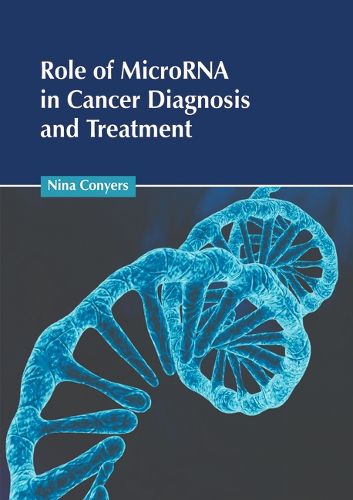Readings Newsletter
Become a Readings Member to make your shopping experience even easier.
Sign in or sign up for free!
You’re not far away from qualifying for FREE standard shipping within Australia
You’ve qualified for FREE standard shipping within Australia
The cart is loading…






MicroRNA (miRNA) refers to a single-stranded non-coding RNA molecule found in animals, plants, and some viruses. It is involved in the post-transcriptional regulation of gene expression and RNA silencing. In cases of cancer of unknown primary (CUP), miRNA classifiers can precisely pinpoint the tissue of origin. As a diagnostic test, blood-based miRNA profiling offers a non-invasive and quick alternative to traditional approaches. Furthermore, miRNA patterns can also be used to distinguish between different subtypes of tumors. Another novel method for determining cancer is testing for miRNA-associated single nucleotide polymorphisms (SNPs). MiRNAs can also be utilized as targets or tools for the treatment of various cancers. They use their expression level for prognosis in cancers. Dysregulated miRNAs have been linked with various features of cancer including resisting apoptosis, generating angiogenesis, maintaining proliferative signaling, triggering metastasis and invasion, and dodging the growth suppressors. This book contains some path-breaking studies on the role of microRNA in cancer diagnosis and treatment. Those with an interest in the field of oncology would find this book helpful.
$9.00 standard shipping within Australia
FREE standard shipping within Australia for orders over $100.00
Express & International shipping calculated at checkout
MicroRNA (miRNA) refers to a single-stranded non-coding RNA molecule found in animals, plants, and some viruses. It is involved in the post-transcriptional regulation of gene expression and RNA silencing. In cases of cancer of unknown primary (CUP), miRNA classifiers can precisely pinpoint the tissue of origin. As a diagnostic test, blood-based miRNA profiling offers a non-invasive and quick alternative to traditional approaches. Furthermore, miRNA patterns can also be used to distinguish between different subtypes of tumors. Another novel method for determining cancer is testing for miRNA-associated single nucleotide polymorphisms (SNPs). MiRNAs can also be utilized as targets or tools for the treatment of various cancers. They use their expression level for prognosis in cancers. Dysregulated miRNAs have been linked with various features of cancer including resisting apoptosis, generating angiogenesis, maintaining proliferative signaling, triggering metastasis and invasion, and dodging the growth suppressors. This book contains some path-breaking studies on the role of microRNA in cancer diagnosis and treatment. Those with an interest in the field of oncology would find this book helpful.